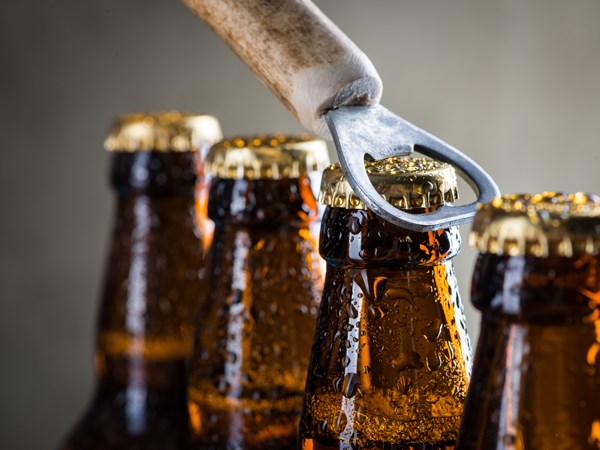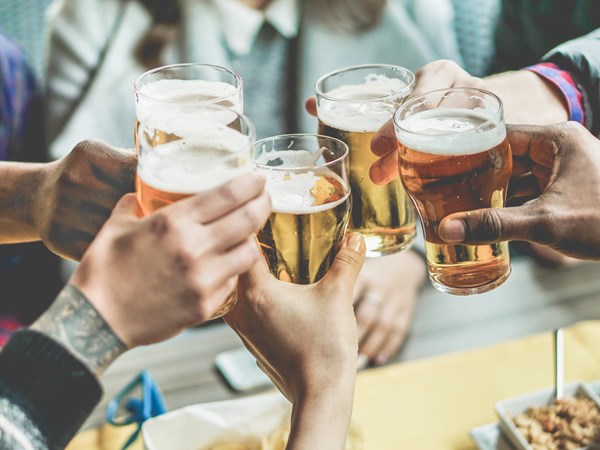Beer tasting language
When tasting beer describing it as having coffee, treacle, and liquorice flavours, or crisp and light body with subtle herbal aroma and soft biscuit malt character is not unusual now but before the mid-1980s there was no tasting vocabulary for beer.
Wine had a rudimentary lexicon from at least the first century CE when Pliny the Elder wrote of wines tasting luscious, or harsh, unripe, sharp, and rough.
Who Developed the Language of Beer Tasting?
A brewing flavour wheel was developed in the 1970s by American chemist Dr Morten Meilgaard and his colleagues, with brief terms to describe the range of aromas and flavours in beer. This was accessible for brewers but was not widely available to consumers. It was only when esteemed British beer writers Roger Protz and the late Michael Jackson sitting in a London pub one night described their pint of Everard’s Tiger Bitter as being ‘nutty’ that they were inspired to collate descriptive notes of the beers they wrote about. Initially many did not understand the concept and thought it was micky taking to say a beer had chocolate flavours especially when at the time descriptions no more enlightening than ‘beery’ were routine. Eventually people saw the value of knowing beforehand how a beer would taste so they could decide whether or not to buy. Roger Protz and Michael Jackson have elevated the reputation of beer in myriad ways and their decision to use wine phraseology has been adopted worldwide. It is rare now to find a beer that does not have even the most basic flavour descriptions.
Thousands of Aromas & Flavours
Sensory experts have identified thousands of aroma and flavour compounds because of the diversity of water, malt, hops, yeast, and adjuncts including fruit and spices. How about this for a mouth-watering melange. From malt: biscuits, brown bread, caramel, cereal, chocolate, coffee, honey, nuts, smokiness, bacon, toast, tobacco, toffee. From hops: citrus, herbal, grassy, peach, pineapple, lychee, passion fruit, floral, pine, woody, peppery, spicy. From yeast and other microflora: bubblegum, banana, raisins, berry and stone fruit, citrus, spice, balsamic vinegar.
Beer can offer some of the most complex drinking experiences. Those who are happy chugging without giving much thought will still enjoy it, but for individuals who want to think while they drink then prepare to be surprised.
How To Taste Beer
To get the most out of beer entails mindfulness, at least for the opening few sips, as all the senses are engaged. A beer gulped and swallowed quickly has no time to disclose itself fully and the drinker will just have a basic overview comprising mostly of texture and bitterness, missing out on the panoply of other characteristics.
Appearance, the sound as it is poured, how it tastes, sensations in the mouth all add to the pleasure. Foam is important because it enhances visual impact. It is unique to beer and is caused by an interaction between malt proteins, a compound in hops, and air bubbles. Depending on how tight or loose the head is will affect the aromas emanating from the beer. If it is loose then they can escape whereas if it is tight they gather under the head.
An ideal shaped vessel is a snifter (also known as a balloon) made from thin glass so the beer is in intimate contact with the mouth. It has a bulbous bowl giving a large surface area for aromas to develop and it narrows towards the rim where the aromas congregate and are funnelled to the nose. Smell is the most important factor in beer tasting because the brain registers 80% of flavours through millions of olfactory cells. Sense of smell is powerful when it comes to recollection. Years after the fact it has the power to transport a person’s imagination back to a terrible hangover. Aroma can prompt positive or negative responses because the olfactory system is part of the limbic network. It connects to the amygdala, the area of the brain where emotion is processed, and to the hippocampus which is concerned with experiences and learning through association. No other sense has that intimate connection with memory. Let’s hear it for the nose!
Swirl & Sniff
Fill the glass about 1/3 full and then swirl it to release the aromas. Sniff a couple of times and try and describe the smell. Take a sip and as it travels over the tongue it warms and aromatic vapours infuse into the nasal cavity where cells communicate flavour components to the brain. Receptors in several thousand taste buds gather molecules and send messages about levels of sour, sweet, salt, bitter and umami (savoury) tastes. After swallowing, immediately breathe out through the nose and even more flavours will be revealed. This is called retro-nasal olfaction.
Think about the body of the beer, is it light, medium or full? Is the alcohol apparent? Alcohol has a warming effect and the higher it is the sweeter and smoother the beer will be because it balances astringency. What is the texture – drying, tannic, smooth, prickly with carbonation? Carbonation increases acidity and concentrates bitterness so the bigger the carbonation the dryer and more bitter the beer will be. Consider the balance - is it harmonious or is one or more factor standing out to the detriment of enjoyment? There is a lot to analyse when professionally tasting beer so don’t do it in one mouthful, repeat the exercise several times.
Now you know these techniques, I guarantee you will never drink beer in the same way again and your drinking experience will be ever better. Cheers!
JANE PEYTON
Signed copies of The Philosophy of Beer by Jane Peyton are available via this link




